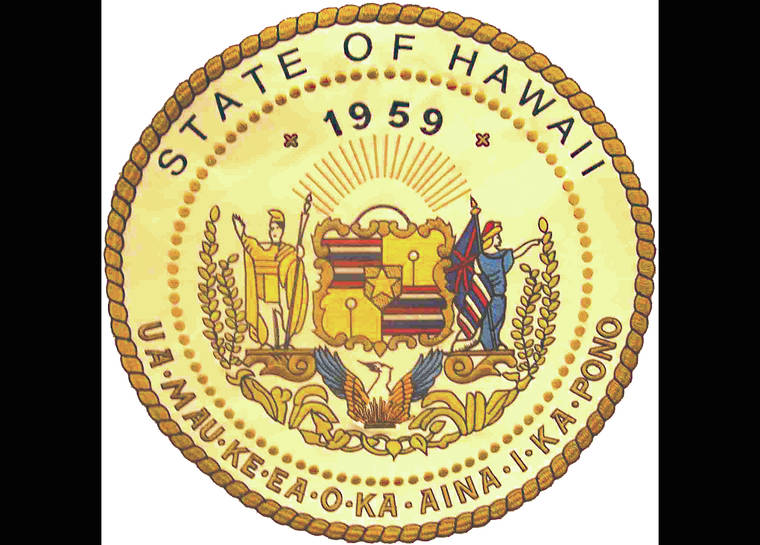Hawaii’s four counties would be able to impose their own additional hotel room taxes under a bill that passed its final reading Tuesday in the state Legislature.
House Bill 862 has gone through several controversial changes during its journey through the Legislature. In early April, the bill — which was up to that point largely concerned with reconfiguring the state’s management of two aerospace programs — was amended to significantly curtail the duties and funding of the Hawaii Tourism Authority.
That bill was discussed at conference committees during the weekend and emerged for final reading in both chambers Tuesday in yet another form — one which restored much of HTA’s resources, but made significant changes to how the state handles the Transient Accommodations Tax.
Currently, the TAT is a 10.25% tax imposed on transient accommodations such as hotel rooms and vacation homes that generated about $640 million in 2019, according to the Department of Business, Economic Development and Tourism.
Of that revenue, about $100 million is divided among each of the counties annually. This year, Hawaii County was to receive about $19 million in TAT revenue.
The newest version of the bill removes the counties’ allocation of TAT revenue entirely and puts the money in the state general fund.
Instead, the counties would be allowed to impose their own countywide TAT — at a rate up to 3% — in addition to the current statewide TAT.
These changes — which would further increase the tax per hotel room — dovetail with additional changes that limit the resources of the HTA. The most recent version of the bill abolishes entirely the nonemergency Tourism Special Fund, the primary source of HTA’s funding, which would have been allocated $79 million in TAT revenues this year.
The bill does, however, allocate to HTA $60 million from the American Rescue Plan Act for the 2021-22 fiscal year.
During the bill’s final reading in the House on Tuesday, some lawmakers expressed concerns that the changes to the TAT will result in drastically lower revenues for individual counties.
Maui Rep. Tina Wildberger said Maui would receive only one-third of the $22 million it would typically receive in TAT allocations. However, Hilo Rep. Chris Todd said total revenue per county might actually increase so long as visitor numbers and TAT revenues return to normal.
Other lawmakers said the changes to the bill represent an opportunity for the state government to reconfigure its reliance on tourism.
“For years and years and years, the Hawaii Tourism Authority has enjoyed an incredible degree of not just autonomy but guaranteed funding,” Oahu Rep. Sean Quinlan said. “And they produced results: 11 million visitors a year. But I submit … that perhaps they weren’t the results we really wanted. If you ask my constituents, they would tell you that we brought too many people who on average were not spending enough money per person. So the impacts of the visitor industry have started to outweigh the benefits in many parts of Hawaii.”
Pearl Harbor Rep. Sonny Ganaden said it is long overdue that the state rein in the amount of taxpayer dollars spent on the tourism industry.
“This bill represents a test — a test as to whether or not trickle-down economics works in real time,” Ganaden said, adding that he hopes that taxpayer dollars that would otherwise be spent on public relations for the state hotel industry will instead be spent on improving the lives of the taxpayers themselves.
“This is a year to restructure our government, and this pandemic allows us to do that,” said Waikiki Rep. Adrian Tam. “And if this bill doesn’t work, I think we can always come back.”
Not all lawmakers were so optimistic.
Hawaii Kai Rep. Gene Ward foresaw only problems emerging from the bill.
“We wanted the community to be uniform in terms of Safe Travels Hawaii, and now we’re going to have different kind of taxes on different hotels on different islands,” Ward said. “I have serious doubts that this policy will ever reach anything good.”
“This bill is so very different from the draft I signed earlier this year,” Wildberger said. “I’m very grateful for … getting a handle on HTA spending and reducing their funding and creating accountability. I am opposed to the reduction in TAT tax that the sister island counties will be tasked with generating themselves.”
Despite some lawmakers’ concerns, the bill passed final readings in both the House and Senate, with only six representatives and two senators voting against it. Hilo Sen. Laura Acasio was the only Big Island legislator to vote against it.
The bill will now be forwarded to the governor, who will decide whether to sign it. Ige has until June 21 to announce what bills he intends to veto this year.
Email Michael Brestovansky at mbrestovansky@hawaiitribune-herald.com.

